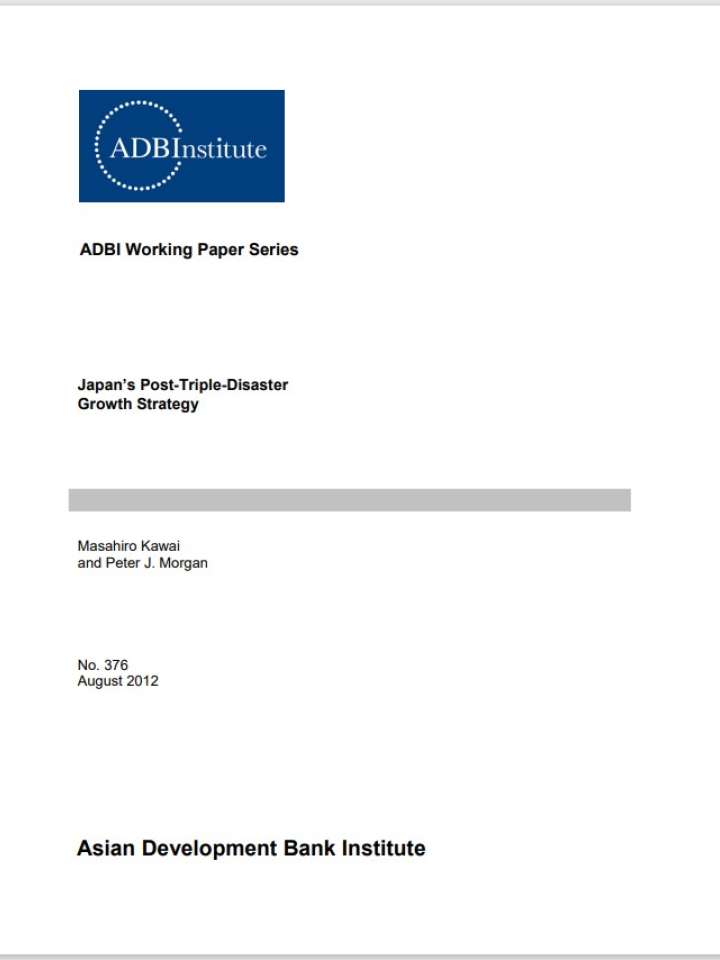The Great East Japan Earthquake on 11 March 2011 was the biggest earthquake recorded in Japanese seismic history, and the fourth largest recorded in the world. The scope of the disaster far exceeded that of the Hanshin Earthquake of 1995. The repercussions of this disaster spread far beyond the geographical areas directly affected. For example, electric power supply capacity in the Kanto area, which accounts for about 40% of Japanese gross domestic product (GDP), fell at one stage by about 40% from the normal peak—a severe constraint on economic activity, and the supply of nuclear-generated electric power has largely been cut off since then. Production supply chains were significantly disrupted, not only in Japan, but all over Asia.
The disaster also highlighted Japan’s many other structural challenges besides reconstruction needs, including persistently low growth, population aging and low fertility, burgeoning government debt, declining international competitiveness, and uncertain energy supplies. Moreover, the global financial crisis and the ongoing euro area financial crisis suggest that Japan needs to create its own growth momentum without relying excessively on markets in the United States (US) and Europe. This paper discusses the scope of these challenges and sets out a long-term strategy for overcoming them and putting the Japanese economy on a stable growth path. Domestically, key areas that need to be focused on are supply-side reforms, including support for R&D in high-technology, knowledge-intensive, green growth areas; deregulation to promote growth in service sectors and agriculture; corporate tax reduction; and increased energy security; as well as fiscal and social security reforms to put the public debt to GDP ratio on a sustainable basis. Externally, Japan needs to link its economy firmly with the strong growth track of emerging Asia and its rapidly growing middle class. It needs to promote greater economic links with the rest of Asia, including moves toward an East Asian FTA and support for the TPP that could eventually develop into a trans-Pacific FTAAP
Explore further
